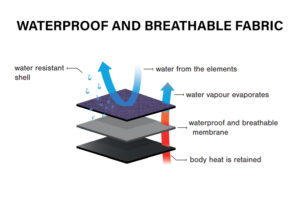The Ultimate Guide to Starting Your Own Clothing Store: Steps and Tips

Table of Contents
ToggleOpening a clothing store is a thrilling endeavor that beckons to the creative entrepreneur. This guide aims to demystify the process and equip you with invaluable insights to navigate the path to clothing store success. From concept to customer engagement, each step is a crucial building block in your journey to establishing a fashion-forward and customer-centric retail space.
The allure of owning a clothing store is woven into the fabric of fashion enthusiasts’ dreams. It’s a canvas where you can curate a unique blend of style, express your creativity, and bring joy to customers seeking the perfect ensemble. However, the journey comes with its own set of challenges and rewards. Understanding the intricacies of the fashion industry, consumer preferences, and evolving trends is pivotal in crafting a clothing store that stands out in the bustling market.
A) Step 1: Market Research and Niche Selection
Market research is the foundation of a successful clothing store venture. By understanding your target audience and choosing a niche that resonates with them, you set the stage for informed decision-making and strategic growth. Follow these steps to navigate this crucial phase effectively:
1. Identify Your Target Audience:
Define demographics (age, gender, location, income level).
Understand psychographics (lifestyle, preferences, values).
Determine shopping behaviors and habits.
2. Explore Niche Options:
Consider various clothing store niches to find the right fit for your business:
Upscale Luxury: Catering to high-end fashion enthusiasts.
Casual Streetwear: Focusing on trendy, everyday styles.
Eco-Conscious Fashion: Promoting sustainable and ethical clothing.
Fusion of Styles: Creating a unique blend of diverse fashion elements.
3. Analyze Market Trends:
Stay updated on the latest fashion trends and consumer preferences.
Identify emerging styles, colors, and materials.
Determine seasonal variations in demand.
4. Study Competitors:
Research existing clothing stores in your chosen niche.
Analyze their strengths, weaknesses, and market positioning.
Identify gaps or unmet needs in the market.
5. Uncover Untapped Opportunities:
Look for areas where current market players might be lacking.
Identify unique value propositions you can offer to customers.
Brainstorm innovative ideas to stand out in the market.
By following these steps, you’ll be well-equipped to make informed decisions about the direction of your clothing store and position yourself for success.

B) Step 2: Business Plan and Branding
A solid business plan and a strong brand identity are crucial for establishing and growing your clothing store. These elements provide structure and differentiation in the competitive market. Here’s how to approach this step-by-step:
1. Crafting a Comprehensive Business Plan:
Define Your Goals: Outline short-term and long-term objectives for your clothing store.
Strategize Effectively: Develop strategies for marketing, operations, and growth.
Financial Projections: Estimate startup costs, revenue forecasts, and expenses.
Operational Structure: Define roles, responsibilities, and workflow within the business.
2. Developing a Compelling Brand Identity:
Choose a Store Name: Select a name that reflects your clothing store’s essence and resonates with your target audience.
Create a Memorable Logo: Design a unique and visually appealing logo that represents your brand.
Select a Color Palette: Choose colors that align with your brand’s personality and evoke the desired emotions.
Shape Your Brand Voice: Define the tone and style of communication that matches your brand’s identity.
3. Establishing Brand Consistency:
Unified Visuals: Ensure your store’s logo, colors, and design elements are consistent across all platforms.
Coherent Messaging: Maintain a consistent brand voice in your marketing materials and interactions.
Customer Experience: Ensure that the brand identity translates into a cohesive and positive customer journey.
4. Fostering Brand Loyalty:
Emotional Connection: Build an emotional bond with customers through authentic branding.
Consistent Experience: Deliver a consistent experience that aligns with your brand promises.
Engagement and Interaction: Interact with customers on social media and other platforms to strengthen brand loyalty.
A well-crafted business plan and a compelling brand identity not only guide your clothing store’s growth but also set the stage for building a strong and loyal customer base.

C) Step 3: Location, Location, Location
The significance of a suitable store location cannot be overstated, as it forms the backdrop for your fashion venture’s story. Your clothing store’s success hinges on the strategic selection of its physical space. Here’s how to make the best location choice:
1. Assessing Accessibility and Foot Traffic:
Proximity to Thoroughfares: Choose a location near main roads, busy streets, or shopping districts to attract passerby attention.
Public Transport: opt for areas with good public transportation connectivity to facilitate customer visits.
Pedestrian Flow: Analyze foot traffic patterns to ensure your store gets noticed by potential customers.
2. Understanding Local Demographics:
Target Audience Alignment: Ensure the demographics of the area match your target customer profile.
Income Levels: Consider the average income of the local population to align with your pricing strategy.
Cultural Preferences: Understand the local culture to tailor your store’s offerings and ambiance accordingly.
3. Evaluating Competitor Proximity:
Competitive Advantage: Assess the presence and proximity of competitors in the area.
Market Gap: Identify if there’s an underserved segment you can cater to, or find ways to differentiate yourself from existing competitors.
4. Gauging Neighborhood Trends:
Trendy Areas: Consider setting up shop in up-and-coming or trendy neighborhoods to capitalize on their popularity.
Gentrification: Research areas undergoing gentrification, as they often present growth opportunities.
5. Local Regulations and Costs:
Zoning Regulations: Ensure the location is zoned for retail and complies with local regulations.
Rental Costs: Factor in rental expenses as a significant part of your operational budget.
6. Future Development:
Urban Plans: Research future urban development projects in the area that could impact foot traffic and customer demographics.
Selecting the right location for your clothing store is pivotal, as it can significantly influence your store’s visibility, customer base, and potential for success.

D) Step 4: Sourcing Suppliers and Inventory Management
Efficiently managing your clothing store’s inventory relies on sourcing dependable suppliers and maintaining optimal stock levels. Here’s how to handle this critical aspect of your business:
1. Identifying Reliable Suppliers:
Research and Vet: Thoroughly research potential suppliers, considering factors like reputation, quality, and reliability.
Request Samples: Obtain samples to assess product quality and match them with your store’s image.
Diversify: Have multiple suppliers to reduce dependency on a single source.
2. Building Supplier Relationships:
Open Communication: Foster clear and open lines of communication with suppliers.
Negotiate Terms: Discuss pricing, payment terms, and delivery schedules to establish mutually beneficial terms.
Long-Term Perspective: Aim to build lasting partnerships with reliable suppliers.
3. Efficient Inventory Management:
Demand Forecasting: Utilize sales data and trends to anticipate demand for different products.
Reorder Points: Set up reorder points to trigger restocking when inventory reaches a certain level.
Seasonal Planning: Plan for seasonal fluctuations and trends to avoid excess stock.
4. Minimizing Stockouts and Overstock:
Real-time Tracking: Implement inventory management software to monitor stock levels in real time.
Avoid Overordering: Calculate order quantities based on historical sales and projected demand.
Safety Stock: Maintain a buffer stock to handle unexpected spikes in demand.
5. Streamlining Operations:
Efficient Layout: Organize your store layout to optimize product display and ease inventory checks.
Regular Audits: Conduct regular stock audits to identify discrepancies and address them promptly.
6. Embracing Technology:
POS Integration: Integrate your point-of-sale system with inventory management for seamless tracking.
Data Analysis: Use data analytics to make informed decisions about inventory replenishment and product selection.
By establishing solid supplier relationships and implementing effective inventory management practices, you’ll ensure a steady flow of appealing merchandise and provide customers with a positive shopping experience.

E) Step 5: Store Design and Layout
Designing your clothing store’s interior is essential for creating an enticing shopping environment. The layout and aesthetics contribute significantly to customer engagement. Here’s how to approach store design and layout:
1. Creating an Immersive Experience:
Theme and Ambiance: Choose a design theme that aligns with your brand and resonates with your target audience.
Lighting: Utilize appropriate lighting to highlight products and set the desired mood.
Music and Fragrance: Use subtle music and fragrances to enhance the shopping atmosphere.
2. Optimizing Visual Merchandising:
Strategic Placement: Position high-demand or trendy items at eye-catching locations to attract attention.
Window Displays: Craft captivating window displays that showcase your store’s essence and current offerings.
Storytelling: Arrange products in ways that tell a visual story and inspire customer imagination.
3. Enhancing Customer Convenience:
Spacious Dressing Rooms: Provide well-designed and comfortable dressing rooms for customers to try on clothes.
Easy Navigation: Ensure aisles are wide enough for smooth movement, and use clear signage to guide customers.
Checkout Efficiency: Create a streamlined checkout area with minimal wait times.
4. Flexibility and Adaptability:
Modular Fixtures: Use movable fixtures to easily adapt your store layout for different collections or events.
Seasonal Changes: Update the store design to reflect changing seasons and trends.
5. Attention to Details:
Furniture and Seating: Offer seating areas for companions or tired shoppers to rest, enhancing the overall experience.
Mirrors: Install well-placed mirrors to help customers view themselves in different outfits.
Sensory Elements: Integrate tactile elements like texture-rich surfaces to engage multiple senses.
6. Customer Flow Analysis:
Entrance and Exit: Design an inviting entrance and an easy-to-locate exit to guide customer flow.
Pathways: Arrange the store layout to encourage a natural flow that maximizes exposure to various sections.
A well-thought-out store design and layout transform shopping into an enjoyable and visually appealing experience, fostering customer engagement and loyalty.

F) Step 6: Legal and Regulatory Considerations
Adhering to legal and regulatory requirements is paramount for a successful clothing store. Taking the necessary steps to establish your business legally safeguards your operations and reputation. Here’s how to manage legal and regulatory considerations:
1. Business Entity Registration:
Choose a Legal Structure: Decide on the appropriate business structure, such as sole proprietorship, partnership, LLC, or corporation.
Register Your Business: Complete the necessary paperwork to officially register your clothing store with the appropriate government agency.
Personal Asset Protection: opt for a legal structure that shields your personal assets from business liabilities.
2. Licensing and Permits:
Research Requirements: Identify the licenses and permits needed to operate a retail business in your area.
Apply Promptly: Apply for the required licenses and permits well in advance to avoid any disruptions to your operations.
Compliance: Ensure you adhere to all regulations related to health, safety, and zoning.
3. Taxation and Financial Reporting:
Obtain an EIN: Apply for an Employer Identification Number (EIN) for tax purposes, even if you don’t have employees.
Sales Tax: Understand your obligations for collecting and remitting sales tax on your products.
Bookkeeping: Maintain accurate financial records and implement a robust bookkeeping system.
Financial Reporting: Prepare and file the necessary financial reports in compliance with local regulations.
4. Employment Regulations:
Hiring Practices: Familiarize yourself with local labor laws related to hiring, wages, and working conditions.
Employee Contracts: Create clear employment contracts outlining terms of employment, roles, and responsibilities.
Health and Safety: Ensure your workplace adheres to safety standards to protect employees and customers.
5. Intellectual Property:
Trademark Protection: Consider trademarking your store name and logo to safeguard your brand identity.
Copyrights: Understand copyright laws if you plan to design or produce unique clothing items.
6. Compliance with Consumer Protection Laws:
Return and Exchange Policies: Establish clear policies for returns, exchanges, and refunds in accordance with local laws.
Transparency: Provide accurate product information, pricing, and terms to customers.
Navigating legal and regulatory considerations diligently ensures that your clothing store operates within the bounds of the law, building trust with customers and avoiding potential legal issues.
G) Step 7: Financial Planning and Funding
A solid financial foundation is vital for the longevity of your clothing store. Thoughtful financial planning and securing adequate funding pave the way for a successful business venture. Here’s how to approach financial planning and funding:
1. Develop a Comprehensive Startup Budget:
Itemize Expenses: List all startup costs, including store setup, inventory, equipment, licenses, permits, and marketing.
Operational Costs: Estimate ongoing expenses such as rent, utilities, salaries, and advertising.
Contingency Fund: Allocate funds for unexpected expenses or fluctuations in sales.
2. Explore Funding Options:
Self-Funding: Use personal savings or assets to cover startup costs if feasible.
Business Loans: Research different types of business loans from banks or financial institutions.
Investors: Consider seeking investors who align with your business vision and are willing to provide capital.
3. Financial Projections:
Sales Forecast: Project anticipated sales based on market research, customer demand, and industry trends.
Expense Estimates: Estimate ongoing expenses for staffing, inventory replenishment, and operational costs.
Break-Even Analysis: Determine the point at which your revenue covers expenses, helping gauge profitability.
4. Cash Flow Management:
Monitor Inflows and Outflows: Keep a close eye on cash inflows (sales) and outflows (expenses) to ensure sufficient liquidity.
Working Capital: Maintain enough working capital to cover day-to-day expenses and emergencies.
5. Long-Term Financial Goals:
Profit Margins: Set realistic profit margin goals to ensure sustainability and growth.
Reinvestment: Allocate a portion of profits for business expansion, marketing, and improving customer experience.
6. Financial Software and Tools:
Accounting Software: Utilize accounting software to track income, expenses, and financial statements.
Budgeting Tools: Use budgeting tools to monitor and adjust spending based on actual versus projected figures.
7. Regular Financial Review:
Periodic Assessments: Regularly review your financial statements to identify trends and areas for improvement.
Adjust as Needed: Modify your financial plan based on actual performance and market changes.
A robust financial plan and secure funding sources set the stage for a stable and thriving clothing store business.

H) Step 8: Preparing for Launch
In the lead-up to your clothing store’s launch, building an effective online presence and orchestrating a successful grand opening event are key. Here’s how to make the most of this crucial phase:
1. Establishing an Online Presence:
Professional Website: Create a user-friendly website showcasing your products, brand story, and store information.
Active social media: Develop engaging profiles on popular social media platforms to connect with potential customers.
Content Strategy: Plan posts and updates that highlight your brand, upcoming launch, and sneak peeks.
2. Crafting a Memorable Grand Opening:
Event Planning: Organize a well-coordinated grand opening event to attract attention and generate excitement.
Invitations: Invite local influencers, potential customers, and the community to attend the launch.
Special Offers: Offer exclusive discounts or promotions for attendees to encourage participation.
3. Exceptional Staff Training:
Customer Service: Train your staff to provide exceptional customer service, creating positive first impressions.
Product Knowledge: Ensure employees are well-versed in your products’ features, benefits, and styling tips.
Problem Resolution: Equip staff with problem-solving skills to handle various customer scenarios.
4. Visual Merchandising:
Eye-Catching Displays: Set up attractive displays that showcase your best products and capture visitors’ attention.
Signage: Place clear and informative signage to guide customers through the store and highlight special sections.
5. Inventory Preparation:
Full Stock: Ensure your inventory is fully stocked with a diverse range of products across different styles and sizes.
Pricing: Clearly label all items with accurate pricing to avoid confusion during the launch.
6. PR and Marketing:
Press Releases: Send out press releases to local media outlets to create a buzz about your upcoming launch.
Social Media Teasers: Tease your audience with sneak peeks and countdowns on social media platforms.
7. Staff Roles and Responsibilities:
Assign Roles: Allocate specific roles to staff members for different aspects of the launch event.
Coordination: Ensure everyone understands their responsibilities and the overall plan.
A well-executed online presence, a successful grand opening, exceptional staff training, and meticulous inventory preparation contribute to a strong start for your clothing store and lay the groundwork for ongoing success.

I) Step 9: Marketing Strategies for Success
Crafting a robust marketing plan is pivotal to ensure the success of your clothing store. To attract both physical foot traffic and online engagement, consider the following strategies:
1. Social Media Marketing:
Visual Content: Post high-quality images and videos of your clothing items to showcase their appeal.
Consistent Posting: Maintain a regular posting schedule to keep your audience engaged and informed.
Engagement: Respond promptly to comments, messages, and inquiries to build a strong online community.
2. Influencer Collaborations:
Identify Influencers: Partner with fashion influencers whose style aligns with your brand.
Product Showcases: Have influencers model and showcase your clothing on their social media platforms.
Authenticity: Choose influencers who genuinely resonate with your brand to enhance credibility.
3. Promotional Events and Sales:
Limited-Time Offers: Host flash sales or limited-time discounts to create a sense of urgency among customers.
Launch Events: Organize themed events to celebrate new collections or special occasions, attracting attention.
In-Store Exclusives: Offer exclusive discounts or products for in-store shoppers during events.
4. Content Marketing:
Fashion Tips and Trends: Share fashion tips, styling ideas, and trend updates to position your brand as a fashion authority.
Blogging: Maintain a blog on your website with informative and engaging content related to clothing and fashion.
Email Newsletters: Send regular newsletters to your subscribers with updates, offers, and valuable content.
5. Local Partnerships:
Collaborate with Local Businesses: Partner with neighboring businesses for cross-promotions and joint events.
Community Engagement: Participate in local events, fairs, or markets to connect with the community.
6. User-Generated Content:
Customer Photos: Encourage customers to share photos of themselves wearing your clothing on social media.
Contests: Host contests that encourage users to create content related to your brand, increasing engagement.
7. Retargeting and Remarketing:
Online Ads: Utilize retargeting ads to reach users who have previously visited your website.
Abandoned Cart Emails: Send reminder emails to customers who left items in their online shopping carts.
A well-rounded marketing approach, including social media engagement, influencer collaborations, promotional events, and content marketing, helps create brand awareness, attract customers, and drive sales for your clothing store.

J) Step 10: Customer Engagement and Relationship Building
Personalized Experience: Tailor interactions, use data for recommendations, and make each customer feel valued.
Attentive Service: Train staff to assist without being intrusive, ensuring a positive shopping experience.
Genuine Interactions: Foster authentic connections, building trust and community.
Feedback Collection: Gather input for continuous improvements via surveys, reviews, and conversations.
Store Customization: Adjust inventory based on preferences and trends to meet customer needs.
Cultivate Advocates: Turn happy customers into brand advocates who promote your store.
Word of Mouth: Leverage advocates for organic word-of-mouth marketing, expanding your customer base.

K) Step 11: Adapting to Challenges and Scaling
Navigating challenges and pursuing growth opportunities are vital for the continued success of your clothing store. Flexibility and strategic expansion are crucial aspects to consider as your business develops. Here’s how to approach challenges and scaling:
1. Anticipating and Addressing Challenges:
Data Analysis: Regularly review sales data and customer feedback to identify trends and potential challenges.
Consumer Behavior: Stay attuned to shifts in consumer preferences and adjust your product offerings accordingly.
Changing Trends: Adapt to evolving fashion trends to ensure your merchandise remains appealing to your target audience.
2. Embracing Adaptability:
Innovation: Explore new ideas and concepts to keep your clothing store fresh and exciting.
Quick Responses: Swiftly address emerging challenges to maintain customer satisfaction and loyalty.
Customer Feedback: Listen to customer feedback and use it to improve your products and services.
3. Strategic Scaling:
Additional Locations: Consider opening new physical stores in strategic locations to expand your customer base.
E-commerce Expansion: Venture into e-commerce to reach a wider audience and offer convenient online shopping.
Global Reach: Explore opportunities for international shipping to tap into a broader market.
4. Technology Integration:
E-commerce Platform: Set up a user-friendly online store with secure payment gateways for seamless online shopping.
Inventory Management Systems: Implement advanced inventory management tools to handle increased stock levels efficiently.
Data Analytics: Utilize data analytics to gain insights into customer behavior and refine your business strategies.
5. Marketing for Growth:
Targeted Advertising: Expand your marketing efforts to reach new demographics and geographic areas.
Loyalty Programs: Introduce loyalty programs to incentivize repeat business and reward loyal customers.
Collaborations: Partner with other brands or influencers to increase your store’s visibility.
6. Operational Efficiency:
Streamlined Processes: Optimize your supply chain, inventory management, and customer service processes.
Training and Development: Invest in staff training to ensure consistent quality of service as you scale.
7. Financial Planning for Growth:
Investment Allocation: Allocate funds strategically to support expansion initiatives and technology upgrades.
Financial Projections: Create updated financial projections to guide your growth strategies.
As your clothing store faces challenges and explores opportunities for scaling, adaptability, innovation, and a customer-centric approach will be pivotal in maintaining your brand’s success and achieving sustainable growth.
13. Conclusion
Congratulations on embarking on the exhilarating journey of starting your own clothing store. With a solid foundation built on meticulous planning, a strong brand identity, and customer-centric strategies, your clothing store is poised for success. Embrace the ongoing evolution of the fashion industry, stay attuned to your customers’ desires, and continue to infuse your passion and creativity into every facet of your store. Your dedication and vision will undoubtedly weave your clothing store into the rich tapestry of the fashion world.





